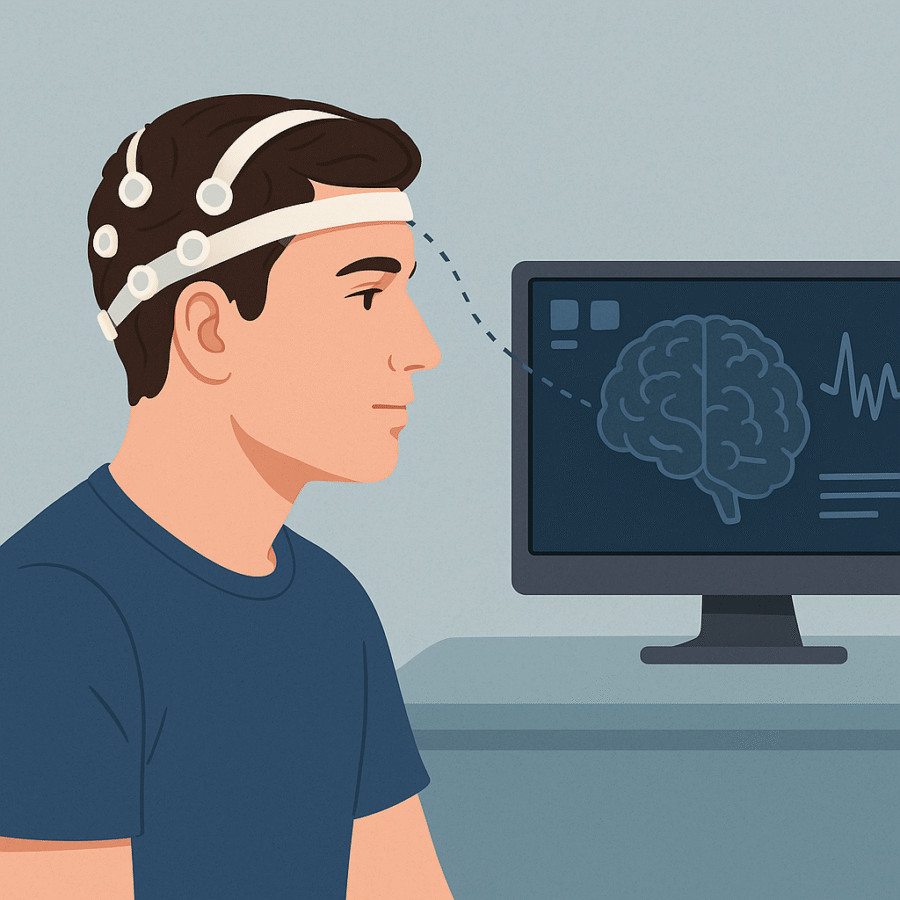Direct brain-to-computer communication is no longer just science fiction; it’s real and already transforming the way we interact with technology. In 2025, brain-computer interfaces (BCIs) are enabling people to control prosthetic limbs and even engage with augmented reality (AR) all through their thoughts.
In this article, we’ll explore how this groundbreaking technology works, its early applications in healthcare and gaming, and the important ethical questions it raises.
What is direct brain-to-computer communication?
Direct brain-to-computer communication, also called brain-computer interface (BCI), is a way for the brain to talk directly to machines. No keyboard. No touchscreens. Just thoughts.
BCIs collect electrical signals from your brain and translate them into commands that a computer can understand. These signals can then move a robotic arm, select options in a game, or even type text.
Simple Example:
Imagine you think about moving your hand, a brain sensor picks that up, and your robotic hand moves. That is BCI in action.
How Does It Work?
Let’s break down the technology behind direct brain-to-computer communication:
- Electrodes: Placed on or inside the skull, these detect brain signals such as EEG waves.
- Signal Processing: Specialized software reads and decodes brain activity.
- Output Device: The translated signals are sent to a computer, robotic system, or AR interface.
There are two main types of BCIs:
-
Non-invasive: Uses sensors placed on the scalp. It’s safer but generally less accurate.
-
Invasive: Involves implants placed directly inside the brain. It offers higher accuracy but comes with greater risk.
Early Applications in Prosthetics
One of the earliest and most impactful applications of direct brain-to-computer communication is in prosthetics. For individuals who have lost limbs, BCIs offer a renewed opportunity for movement and independence.
Key Benefits in Prosthetics:
- Control robotic arms using only thoughts
- Perform everyday tasks such as eating or writing
- Experience a sense of touch through advanced feedback systems
Numerous success stories highlight amputees using BCI-powered limbs to accomplish remarkable feats, from playing the piano to holding a coffee cup.
Brain Interfaces and Augmented Reality (AR)
BCI is not limited to healthcare. It’s also revolutionizing augmented reality (AR). In the gaming world, companies are exploring ways for players to control AR characters using only their minds.
Imagine playing Free Fire just by thinking, aiming, moving, or even communicating with teammates—without ever touching a device. If that excites you, check out our blog on the top five Free Fire affiliate programs to earn money for more insights.
How BCI Enhances AR:
- Navigate AR menus without physical touch.
- Trigger in-game commands using thoughts.
- Enhance gameplay speed and accessibility for players with disabilities.
Companies like Neuralink and NextMind are already testing BCI headsets designed for augmented reality (AR) and virtual reality (VR) gaming experiences. You can explore real-world progress in Neuralink’s official BCI.
Ethical Concerns and Growing Debates
As cool as direct brain-to-computer communication sounds, it raises serious ethical questions.
Major Concerns:
- Privacy: Who Owns Your Brain Data?
- Security: Can hackers control your mind?
- Human Identity: What happens when machines and humans merge?
Governments, tech companies, and scientists are now debating how to create laws and rules that protect people while allowing innovation.
Some experts warn that without strong safeguards, BCI could be misused for mind reading, behavior control, or even social spying.
Benefits and Future Possibilities
Despite the risks, the potential of direct brain-to-computer communication is enormous.
Future Uses to Watch:
- Mental health Support: Detect and treat depression at an early stage.
- Communication Tools: Help individuals with speech loss communicate again.
- Learning Enhancements: Accelerate learning by connecting directly to educational content.
- Immersive Gaming: Play Free Fire or other games in real time using only your mind!
As the technology advances, costs are likely to decrease, and BCIs could become as common as smartphones.

Conclusion
Direct brain-to-computer communication is already transforming lives in 2025. From helping amputees regain movement to powering the future of AR gaming, this technology is advancing rapidly. But like all powerful tools, it must be used responsibly.
If you are passionate about the future of gaming, technology, or healthcare, keep an eye on BCI; it could be the next major revolution.
Stay tuned for more updates on groundbreaking tech like this.









